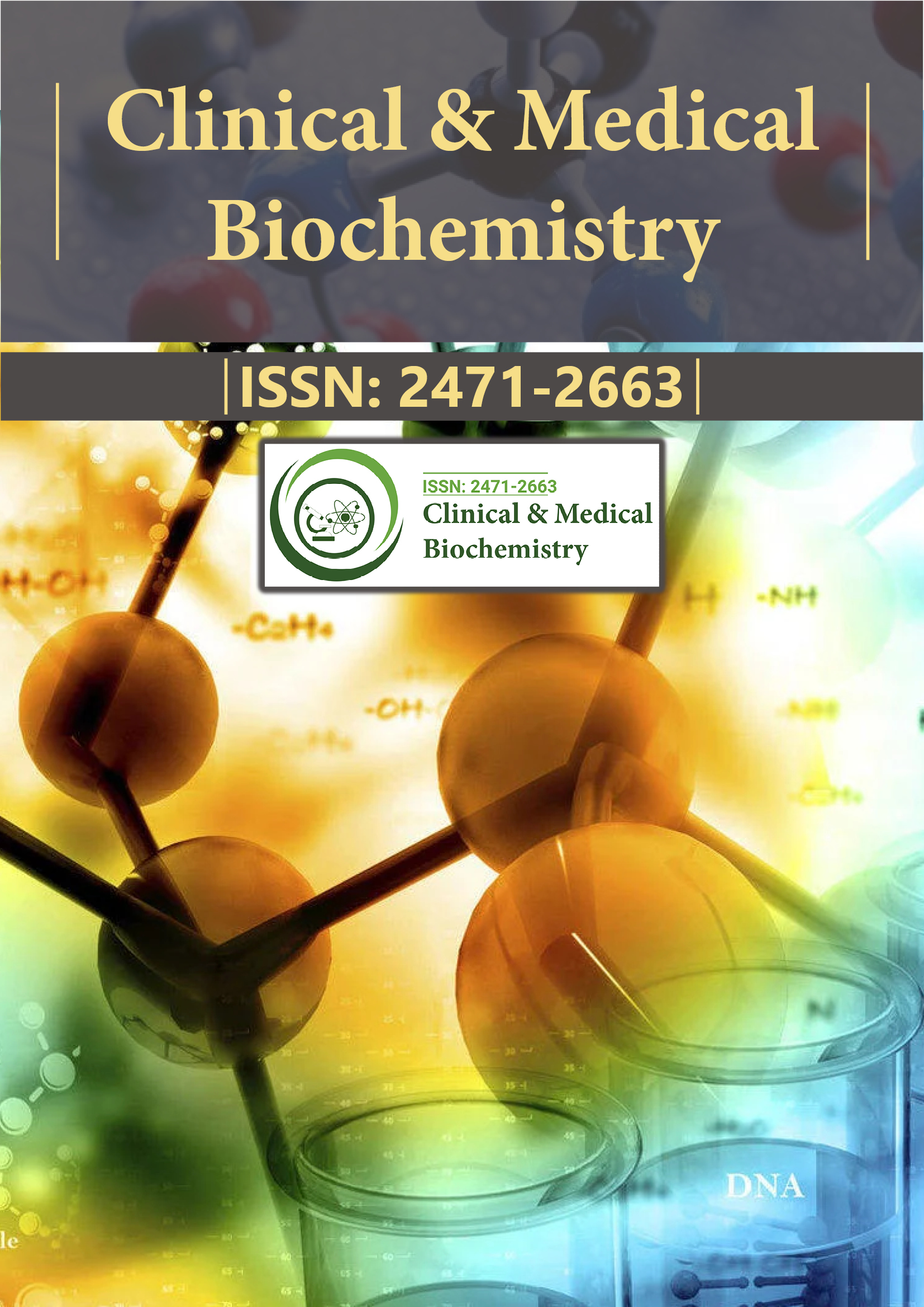Indexed In
- RefSeek
- Directory of Research Journal Indexing (DRJI)
- Hamdard University
- EBSCO A-Z
- OCLC- WorldCat
- Scholarsteer
- Publons
- Euro Pub
- Google Scholar
Useful Links
Share This Page
Journal Flyer

Open Access Journals
- Agri and Aquaculture
- Biochemistry
- Bioinformatics & Systems Biology
- Business & Management
- Chemistry
- Clinical Sciences
- Engineering
- Food & Nutrition
- General Science
- Genetics & Molecular Biology
- Immunology & Microbiology
- Medical Sciences
- Neuroscience & Psychology
- Nursing & Health Care
- Pharmaceutical Sciences
Opinion Article - (2024) Volume 10, Issue 2
Detecting Biological Catalyst Dynamics: New Perspectives on Enzyme Kinetics
Tilly Isla*Received: 25-Apr-2024, Manuscript No. CMBO-24-25756; Editor assigned: 29-Apr-2024, Pre QC No. CMBO-24-25756 (PQ); Reviewed: 14-May-2024, QC No. CMBO-24-25756; Revised: 22-May-2024, Manuscript No. CMBO-24-25756 (R); Published: 30-May-2024, DOI: 10.35841/2471-2663.24.10.214
Description
Enzyme kinetics is a basic biochemistry subject that focuses on the quantitative study of reactions that are controlled by enzymes. Because of the catalytic activity of enzymes, these reactions which are essential for many biological processes occur at very quick and specific frequencies. We can learn many things about the dynamic behaviour of these biological catalysts and their roles in cellular metabolism, drug development, and biotechnology by studying the concepts, uses, and techniques of enzyme kinetics. The study of enzyme-substrate interactions and the calculation of rate variables, which control the rates of enzymatic processes, are at the foundation of enzyme kinetics. Proteins called enzymes are known to catalyze chemical reactions by attaching themselves to particular substrates and assisting the transformation of those substrates into products via a sequence of intermediate steps. The concentration of the enzyme, the concentration of the substrate, temperature, pH, and the presence of activators or inhibitors all affect the kinetics of these reactions and determine how quickly they happen.
For many enzyme-catalyzed processes, the relationship between enzyme activity and substrate concentration is described by the Michaelis-Menten equation, one of the fundamental concepts in enzyme kinetics. The maximum response rate (Vmax) and the Michaelis constant (Km), two kinetic parameters, can be found using this equation, which is based on the presumptions of stable state kinetics. The enzyme's affinity for its substrate is indicated by the Km value, which is the substrate concentration at which the reaction rate is half of Vmax. Enzyme kinetics includes a range of other kinetic models and mechanisms that explain more intricate enzyme-substrate interactions, in addition to the Michaelis-Menten model. For instance, the cooperative binding of substrates or allosteric modulators at many binding sites causes allosteric enzymes to exhibit sigmoidal kinetics. Another topic of interest in enzyme kinetics is enzyme inhibition, which is the reversible or irreversible binding of inhibitors to enzymes that modify the kinetics and activity of the earlier.
There are numerous uses for enzyme kinetics in both fundamental research and real-world sectors like biotechnology, pharmacology, and medicine. Enzyme kinetics provides details about the mechanisms behind enzyme activity, substrate selectivity, and metabolic pathway regulation in biochemical research. Researchers can determine possible drug targets, understand the molecular causes of disease states, and create therapeutic treatments that modify enzyme activity by analyzing the kinetics of enzyme-catalyzed events. Enzyme kinetics is an essential tool in pharmacology and drug development as it helps define the pharmacokinetic characteristics of pharmaceuticals and explains how they interact with other biomolecules and enzymes. Drug Absorption, Distribution, Metabolism, and Excretion (ADME) kinetics are measured in pharmacokinetic investigations. This kinetics is impacted by enzyme-mediated processes, such as the liver's cytochrome P450 enzymes, which are responsible for drug metabolism. Optimizing medication dosage schedules and anticipating drug-drug interactions in clinical practice requires an excellent knowledge of the kinetics of drug metabolism and excretion.
In addition, the study of enzyme kinetics is essential to industrial enzymology and biotechnology, as these areas use enzymes as biocatalysts to produce useful products like food additives, medicines, and biofuels. Biotechnologists can improve the efficiency, specificity, and stability of enzymatic reactions, as well as the yield and economics of bioprocesses, by improving enzyme kinetics through protein engineering, controlled evolution, and enzyme immobilization techniques.
Enzyme kinetics experienced a technological revolution that has transformed science and allowed researchers to analyses enzyme reactions with previously unheard-of precision and throughput. Robotics and automation in conjunction with high-throughput screening techniques enable quick screening of enzyme libraries and the discovery of novel enzyme variations with desirable kinetic characteristics. Furthermore, before experimental validation, researchers may now design enzyme inhibitors, optimize enzyme engineering methodologies, and forecast enzyme dynamics thanks to developments in computer modeling and simulation tools. Enzyme kinetics presents difficulties and limitations that need to be carefully considered despite its many uses and advances in technology. The utilization of simplified kinetic models and assumptions is frequently required due to the intricate nature of enzyme-catalyzed reactions, which involve several intermediates and reaction pathways. Furthermore, to ensure repeatability and accuracy of results, experimental parameters like temperature, pH, and enzyme purity must be carefully regulated. These factors can affect kinetic parameters.
Conclusion
Enzyme kinetics serves as a fundamental basis for biochemical research and practical applications by describing the dynamic behaviour of biological catalysts and their functions in drug metabolism, biotechnology, and cellular activities. Enzymologists can use enzymes for a wide range of scientific and industrial applications by getting to know the complexities of enzymesubstrate interactions and explaining kinetic mechanisms. There's always potential for creativity and discovery in this discipline as long as technology keeps improving and the complexity of enzyme kinetics keeps growing.
Citation: Isla T (2024) Detecting Biological Catalyst Dynamics: New Perspectives on Enzyme Kinetics. Clin Med Bio Chem. 10:214.
Copyright: © 2024 Isla T. This is an open-access article distributed under the terms of the Creative Commons Attribution License, which permits unrestricted use, distribution, and reproduction in any medium, provided the original author and source are credited.

